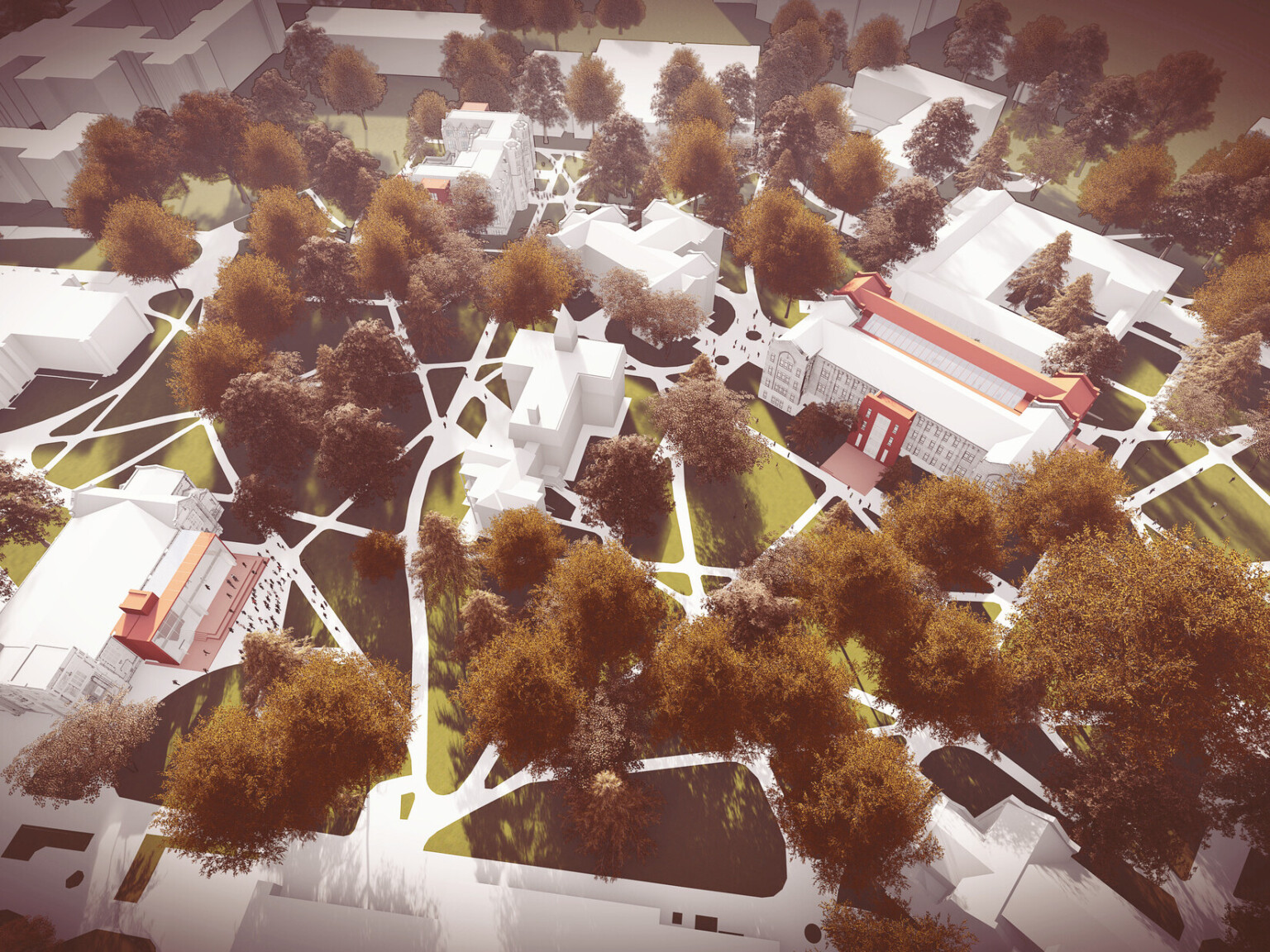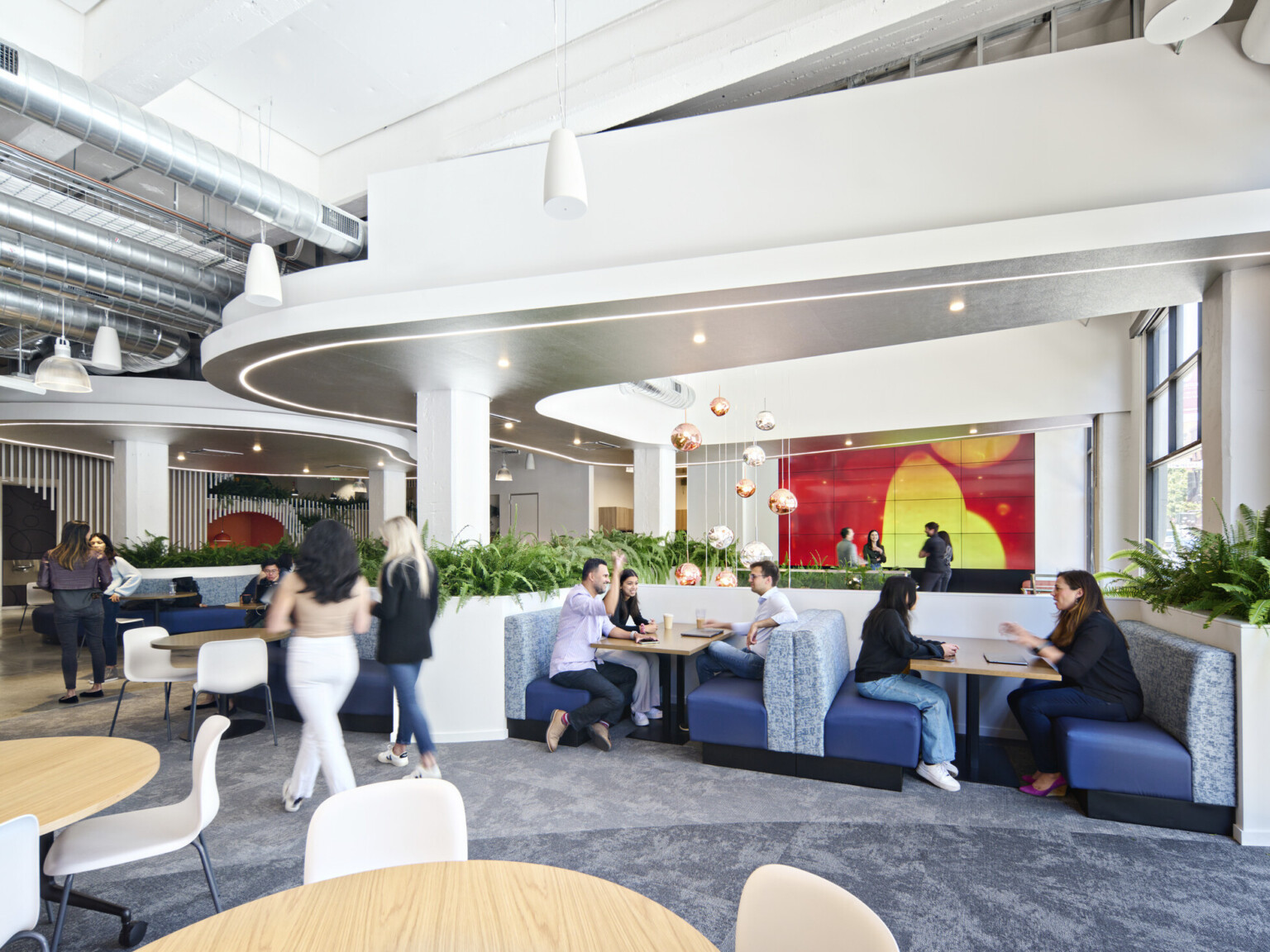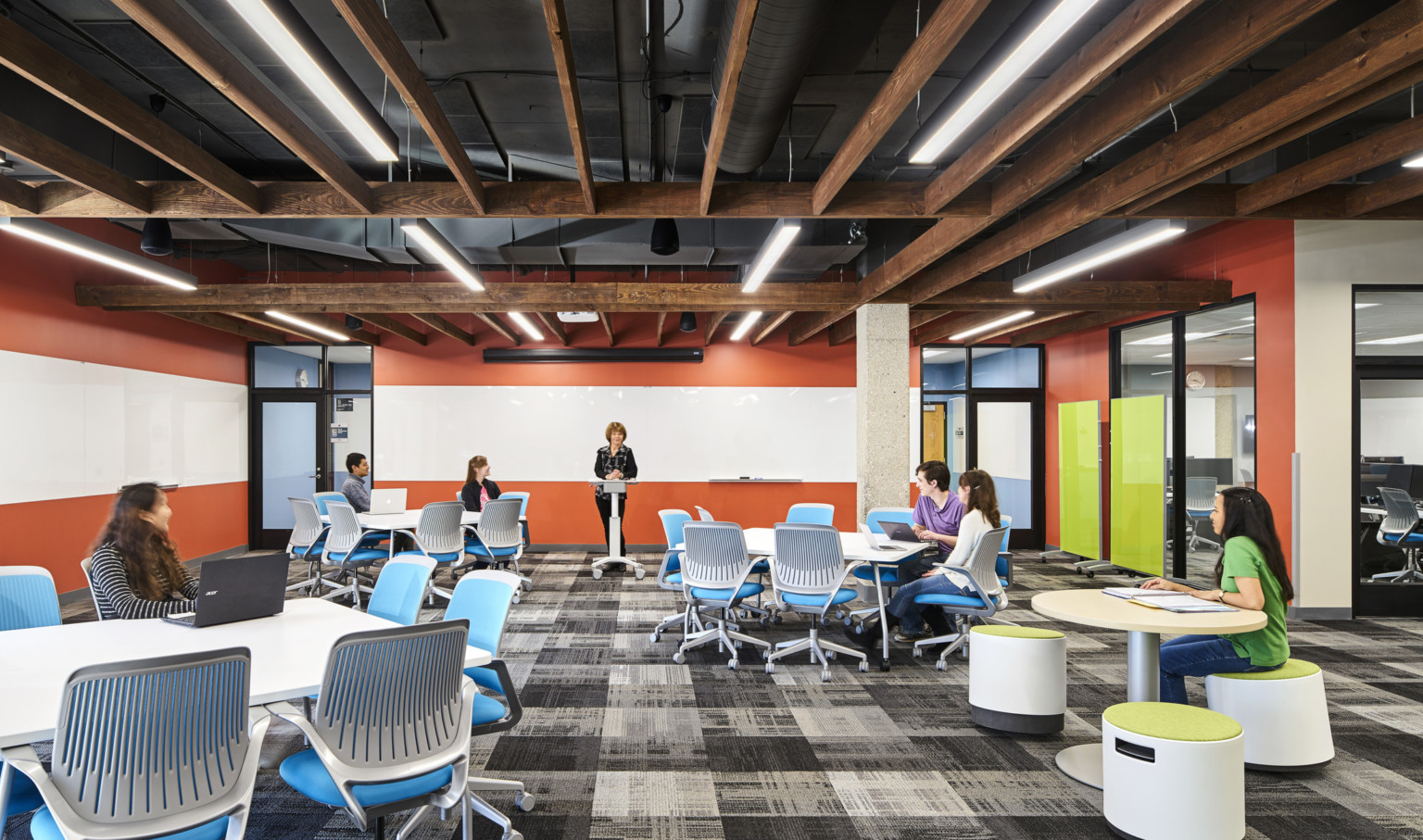
A 360-View Design Approach
Understanding what users want and, maybe even more importantly, what they need in campus facility design starts with better understanding those users. Many firms engage in focus groups where they talk to a few dozen or so students and staff to formulate a vision of the project. We, however, advocate for a more immersive practice—one in which we actually speak with individual students and staff as they move about the campus. This approach gives us much greater leads to more personal engagement with a larger percentage of the student body. It not only informs the proposed design, but uncovers those nuances important to the particular campus’s culture, achieves greater levels of buy-in from all stakeholders, and focuses funding on what really matters.
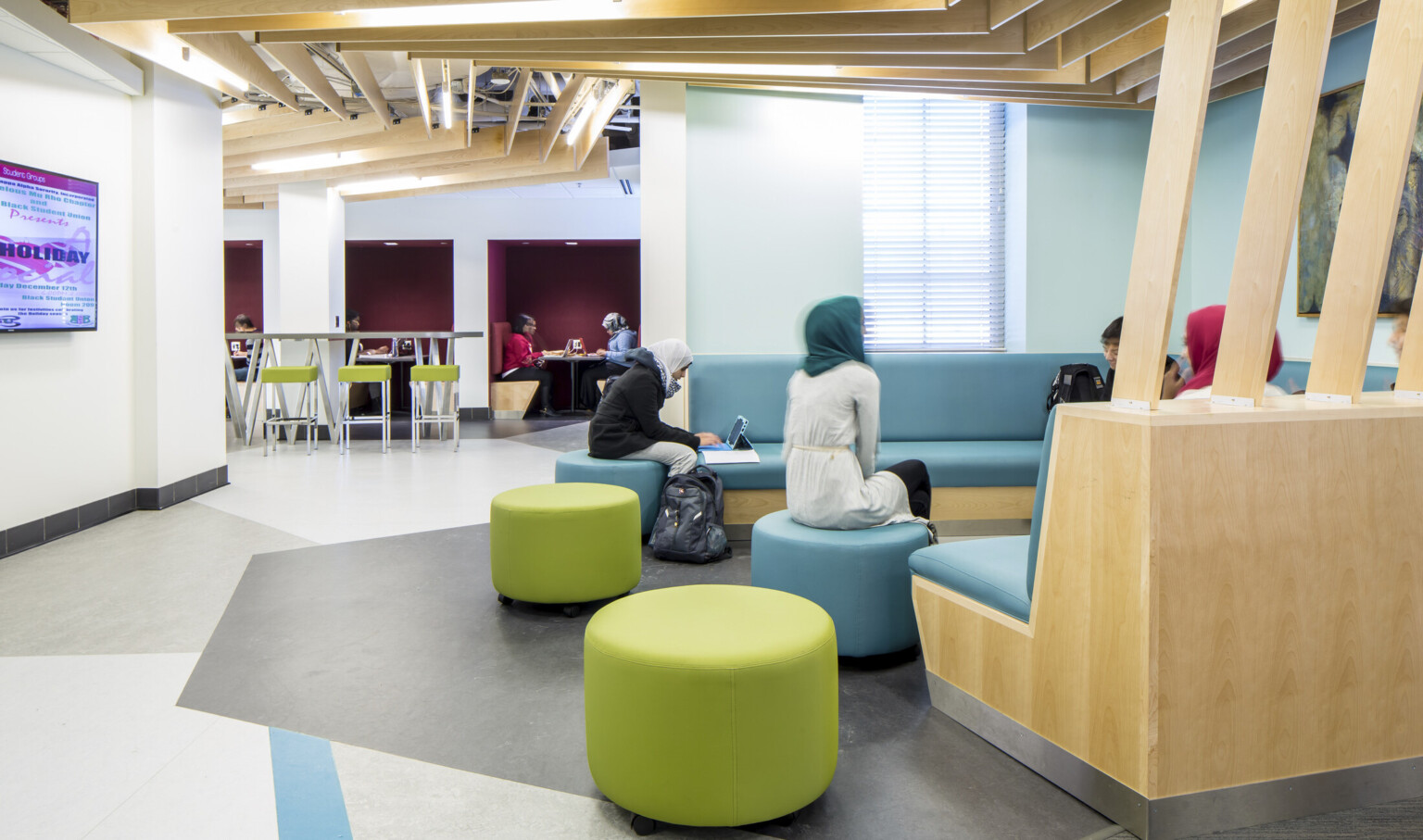
The 360-View Process
Whether for a master plan or the design of a new dining hall, a comprehensive view of any project provides unique insight into how it should move forward. When our designers begin a 360-view process, we collaborate with the project’s steering committee to develop a list of questions or “conversation starters” and then very intentionally choose places to conduct “person on the corner” interviews. For example, if we’re working on a new dining hall for a campus, we’ll position ourselves at the existing dining hall, by other food service venues on campus, or near residence halls where students are likely to be on a meal plan. There, we can speak to them about how they are using the existing dining venues, any shortcomings they see in the current programs, and what their needs and desires for the project might be.
When designing a building, or engaging in a large scale planning project that impacts an entire student body, our goal is to engage an average of 10 percent of the student body. Concentrating in one central location, however, won’t afford us the opportunity to converse with all students and gives only a narrow view of the perceived needs and opportunities for the project. Instead, we aim to strategically place ourselves across the campus to talk with a cross section of students and ensure we mimic the demographics of the institution. When we design a new student center, for example, we have to make sure it embraces all students regardless of their residency or class year.
Our experience has been that once students understand you are interested in what they have to say, they are eager to share. After about one week on campus, word-of-mouth spreads and people seek us out to share their thoughts. This process, though it takes more time and effort than simple focus groups, ensures the project will realize its full potential, that funding will be expended in the best way, and ultimately produces projects that reflect the unique culture of each campus and the community it serves.
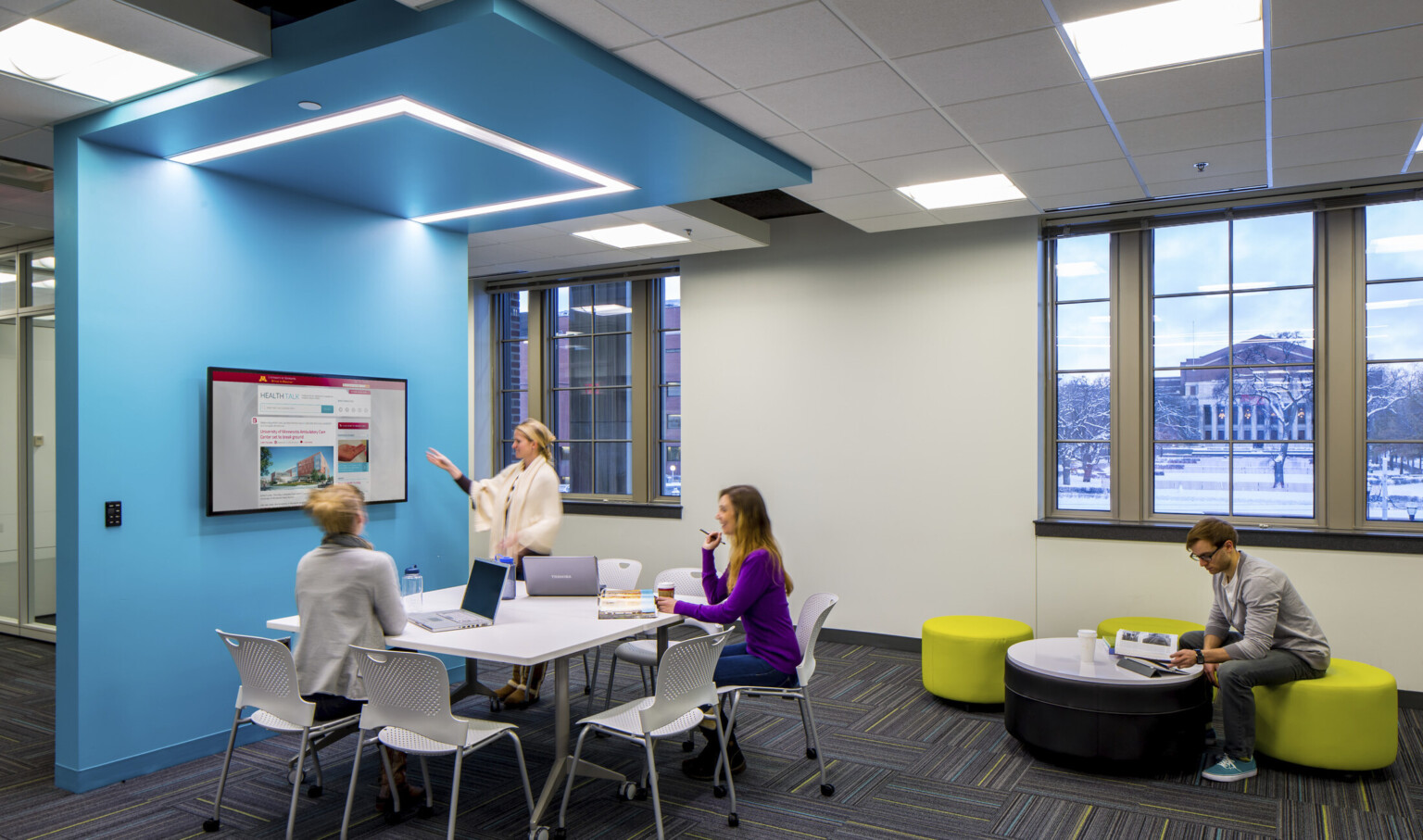
Students Feel Heard
Relating to students on their home turf helps us better understand what the campus means to them; their likes, dislikes, hopes, and dreams for what their campus canbecome. The culture of an institution is largely driven by its students. Who better for us to engage with to thoroughly understand what a campus should look and feel like? Student willingness to participate provides key insights into the nuances of the campus, its student body, and what is critically important to its inhabitants. Though we may have existing data on 85 percent of what we hear, the other 15 percent that we uncover through these conversations transforms a good project into a great one. After all, it’s the small things that count in truly great design.
Educators and Administrators Have More Buy-In
As it implies, a 360-view approach involves talking with more than just one group of users. While students are an integral component of the process, it’s also important to have discussions with educators, administrators, and facilities staff to uncover how the project will impact them. Enrollment and admissions staff can, for example, provide valuable information about the feedback they receive during prospective student tours: What do prospective students say they are looking for? What’s missing from the campus? What have the students seen and liked at other campuses they have visited? At the front lines of student communication, these groups can be strong advocates in helping us achieve the highest results.
The 360-view approach isn’t an exact science, but it does provide a foundation for ensuring our work responds to the genuine needs and desires of our clients, at times uncovering issues of which they were not aware. While we don’t indiscriminately accept every suggestion made, we do present the information we gather to the project’s steering committee and collaboratively work through the ways it may impact the outcome. Speaking with a diverse group of users can help create a groundswell of support for projects and create a collective story that is not only tantamount to defining a project but also relaying the value of the project to governing bodies. At the end of the day, it’s not about the trends—it’s about what’s intrinsic in the culture of an institution, and how we as designers can help tell that story through our work.







